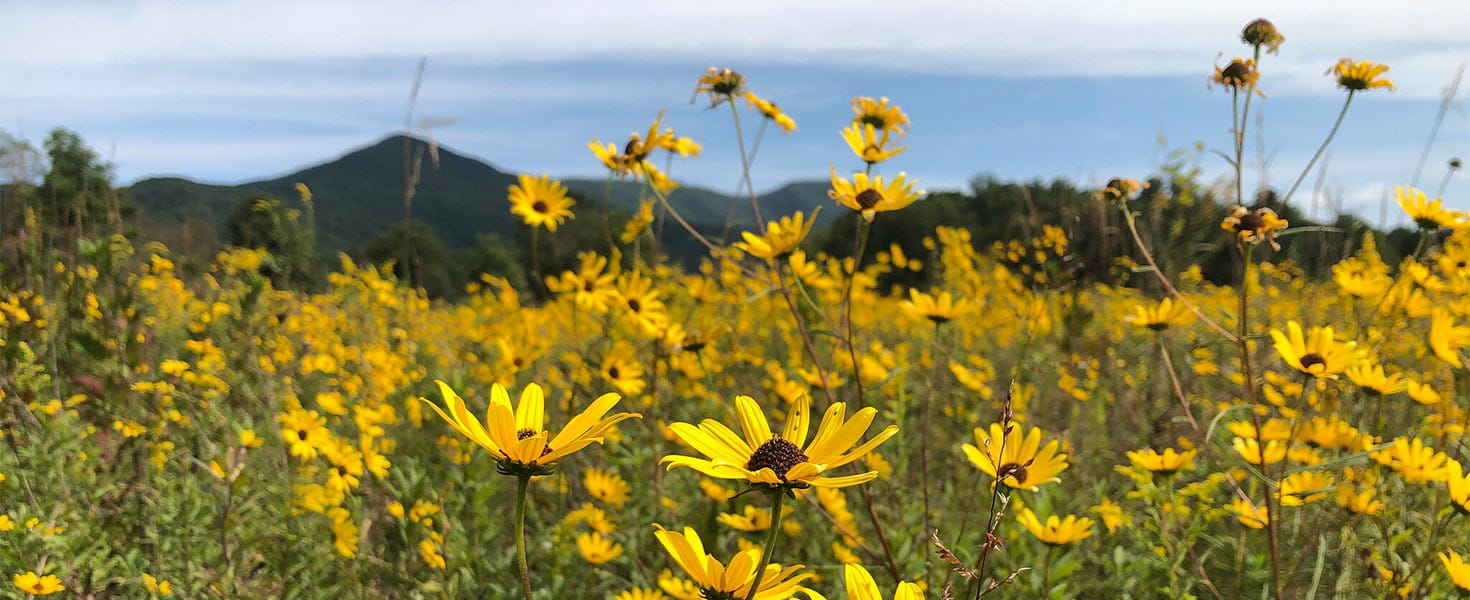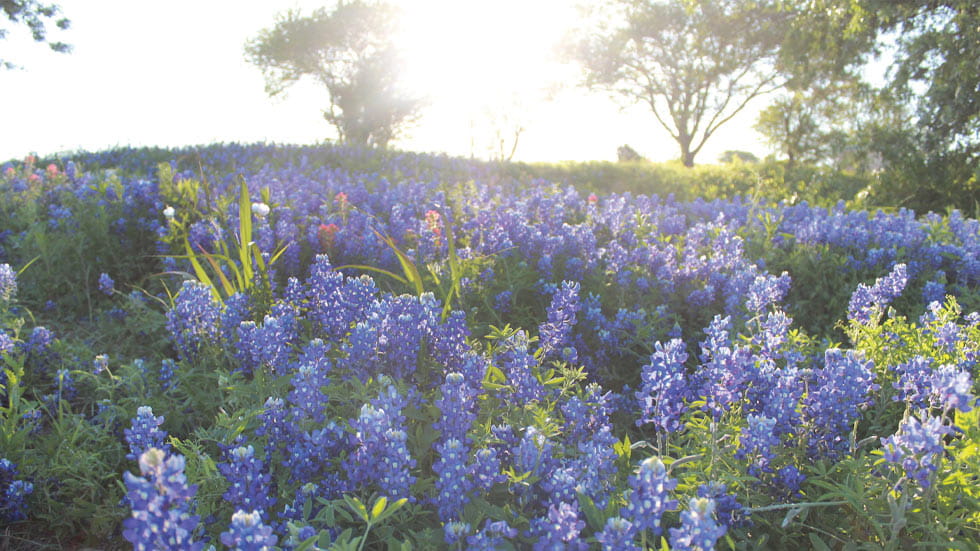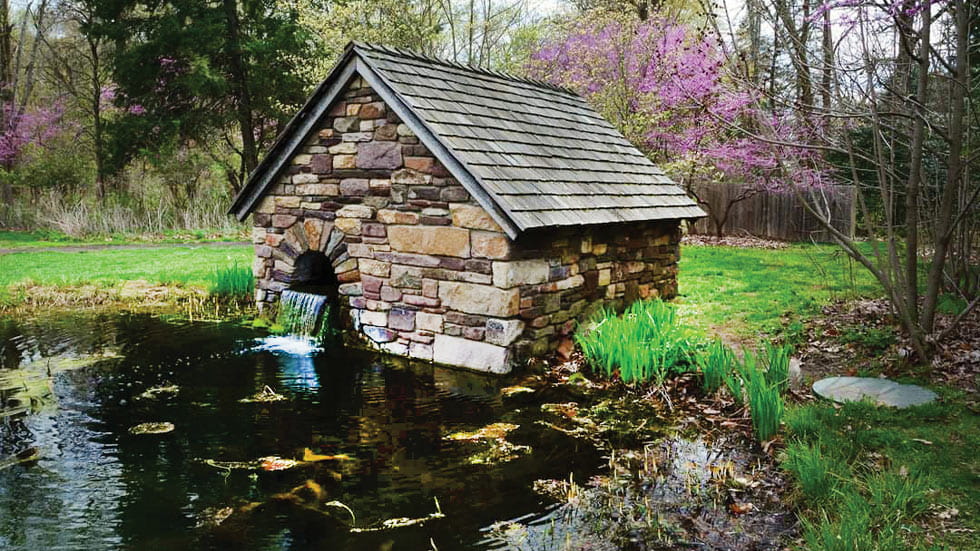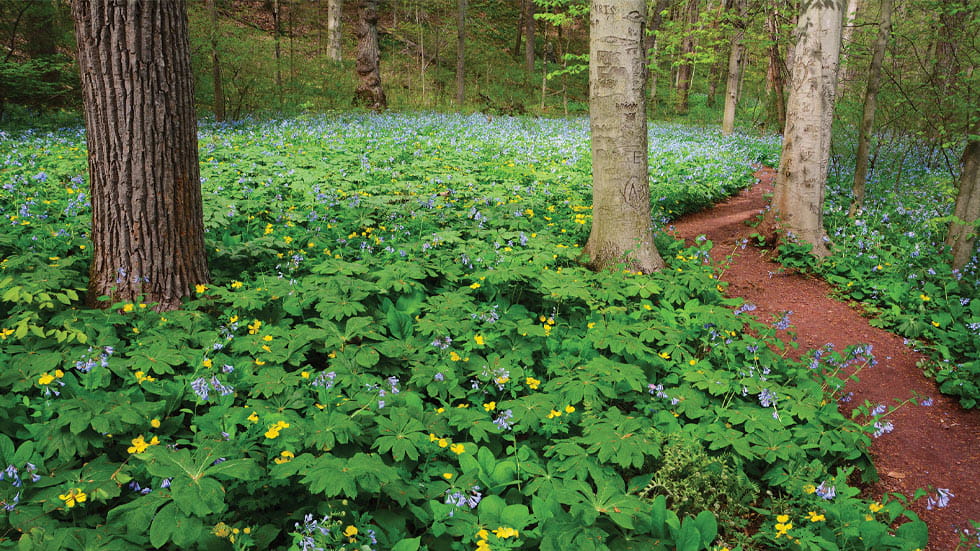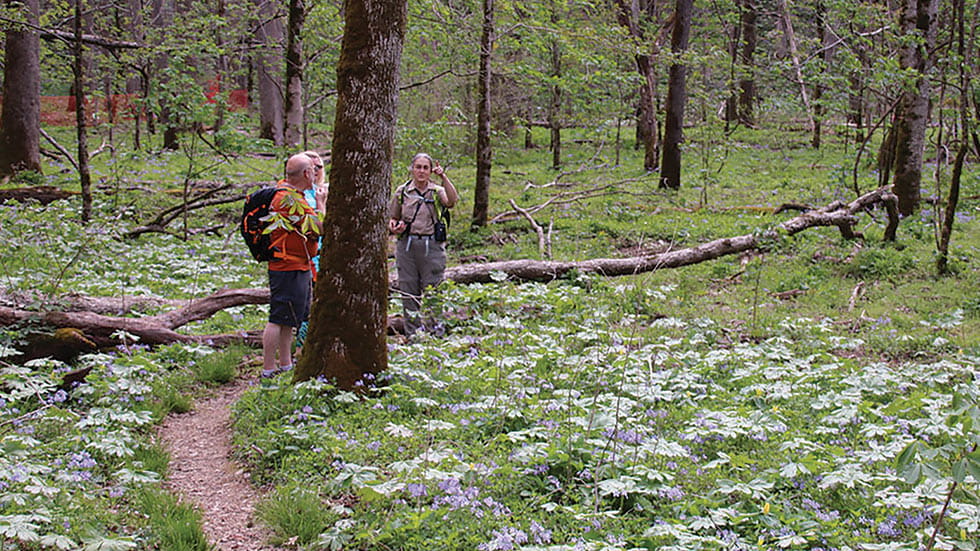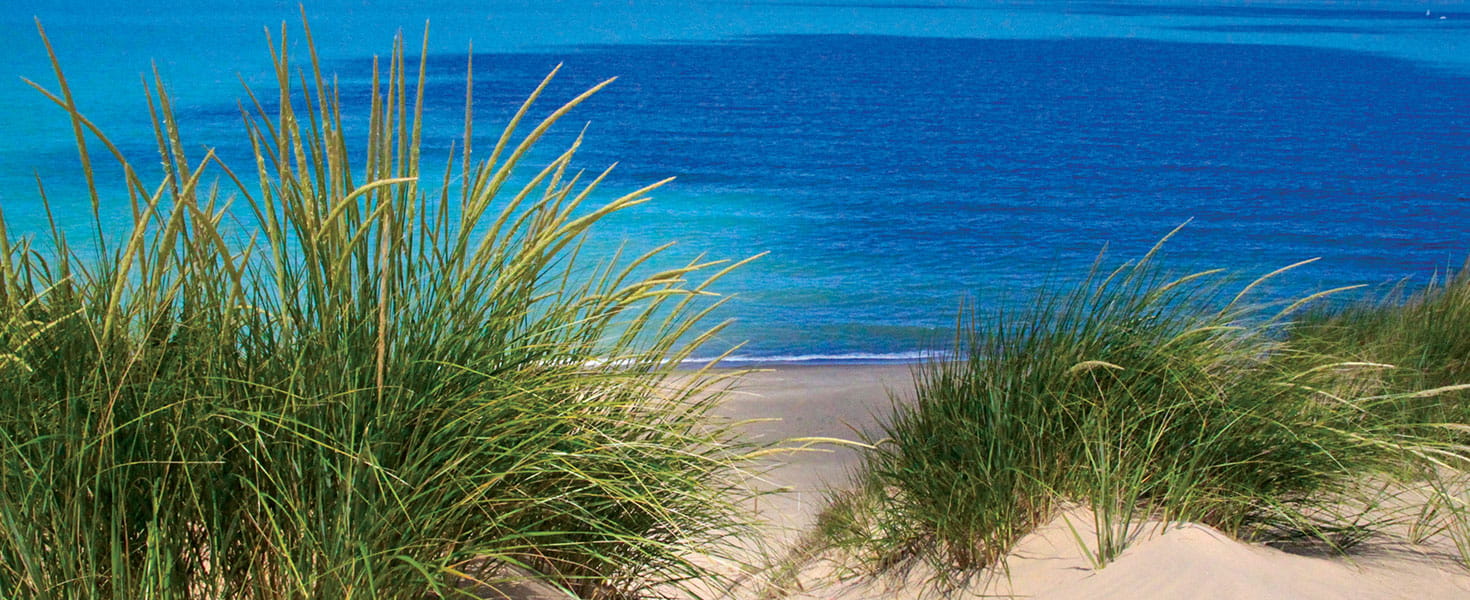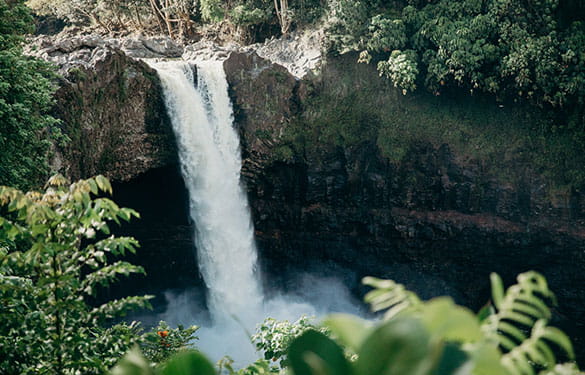Nothing says bye-bye to winter and hello to spring like a landscape awash in wildflowers. Blooms in these postcard-perfect places are bound to melt away the winter blues.
Ennis Bluebonnet Trails; Photo Courtesy of City of Ennis
ENNIS BLUEBONNET TRAILS
Ennis, Texas
bluebonnettrail.org
In true Texas fashion, nature here goes big with a profusion of wildflowers—think Indian paintbrush, red poppies, black-eyed Susans, winecups, evening primroses and more—carpeting the rolling hills and grassy meadows of the Lone Star State each spring. April is peak bloom time for the major headliner of this seasonal show: the bluebonnet, the official state flower, with its vertical shafts of deep-blue petals popping up from fields of green.
For the mother lode of bluebonnets, head about 35 miles south of Dallas to the Ennis Bluebonnet Trails. Ennis was designated the home of the Official Texas Bluebonnet Trail by the state legislature in 1997.
Photo by Ayd Imagery
Throughout April, the Ennis Garden Club presents 40 miles of mapped bluebonnet driving trails in a series of three marked loops, passing by parks, fields with horses and longhorn cattle, and even a winery. Members survey the routes weekly to point visitors to the best spots to see the blossoms (be careful not to trespass on private property). The second to third week of April is historically peak bloom.
The second week of April is also when the annual Ennis Bluebonnet Trails Festival unfolds (this year, April 8 to 10) downtown. Festivalgoers can enjoy arts and crafts, live music, local foods and, of course, wildflower walks amid the glorious blooms.
Structure at Bowman's Hill Wildflower Reserve; Photo by Don Rohlfing
BOWMAN’S HILL WILDFLOWER PRESERVE
New Hope, Pennsylvania
bhwp.org
The country’s only living museum exclusively devoted to native plants, this 134-acre preserve, founded in 1934, supports more than 700 of Pennsylvania’s 2,000 native plant species—with some 60 species deemed either rare, threatened or endangered. Growing in situ, a wealth of wildflowers adorns diverse habitats ranging from hardwood forests and sheer hillsides to open meadows and wetlands.
More than two dozen marked trails meander through four-and-a-half miles of preserve. (Most offer gentle strolls, while others require moderate hikes.) Come spring, the forest floor of the woodland trails is cloaked in a rich tapestry of color, compliments of a burst of spring ephemerals. The most vibrant display occurs from mid-April through May, when flowering shrubs, trees and vines join the chorus of color.
Bowman's Hill Wildflower Reserve; Photo by Don Rohlfing
March brings round-lobed hepaticas, snow trillium and spicebush, to name a few. In April, wood poppies, toadshades, marsh marigolds, creeping Jacob’s ladders and dwarf crested irises delight. May brims with Eastern columbines, wild geraniums, yellow lady’s slippers, shooting stars, Virginia bluebells and more.
Guided wildflower walks (available Friday through Sunday from April to October) delve deeper into the flowers and fruits in season as well as plant–animal interactions—think birds, frogs and small mammals—in this dynamic environment that’s very much alive and well.
Photo Courtesy of National Park Service/Warren Bielenberg
GREAT SMOKY MOUNTAINS NATIONAL PARK
Tennessee and North Carolina
nps.gov/grsm; wildflowerpilgrimage.org
Nicknamed Wildflower National Park, Great Smoky Mountains National Park boasts more flowering plants—some 1,500 varieties—than any other national park in North America. While blooming flowers can be found here year-round, springtime delivers the most stunning wildflower spectacles.
The season’s showstopper is a kaleidoscope of spring ephemerals. Having adapted to the leaf cycle of the overstory trees, ephemerals emerge from February through April—before the deciduous trees leaf out—flowering and then producing fruit before going dormant by May or June. Peak bloom is usually mid to late April at lower elevations; higher elevations bloom later, of course, with peak bloom on the highest points in early to mid-May.
Great Smoky Mountains National Park; Photo Courtesy of National Park Service/Warren Bielenberg
Comprising more than 500,000 acres straddling two states—the three main entrances are in Gatlinburg and Townsend, Tennessee, and Cherokee, North Carolina—the park has no shortage of landscape for wildflower viewing. To stop and smell the wildflowers, venture on any of 10 mapped wildflower walks, many fringed with ephemerals such as showy orchids, crested dwarf irises, fire pinks, columbines, bleeding hearts, phacelia, jack-in-the-pulpits, little brown jugs, violets and 10 species of trillium.
Time your visit for the annual Spring Wildflower Pilgrimage—this year April 26 to 30—to take in a weeklong lineup of all things wildflowers, including guided hikes, exhibits, photography workshops and more.








